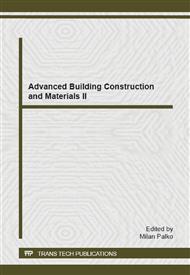p.53
p.61
p.68
p.79
p.89
p.97
p.105
p.113
p.121
Determination of the Wind Pressure Coefficients on the Model of the Silsoe Cube by the Measurements Made in Wind Tunnels
Abstract:
Nowadays, the architects often design interesting atypical structures or the set of the structures. In these cases, it is important to consider also the wind effects and their correct values (wind load). Recommended values in Eurocode cannot be used in many times, because of difficult shapes of the structures, their large heights, or surrounding structures. Therefore, detailed analyses of wind effects either on designed structure or the pedestrians walking near the structure have to be done. The results can be used for better and more saving design, or more appropriate arrangement of planned structures. The analyses can be done by numerical methods (computing programs) or by experimental measurements in wind tunnels or by the combination of the both.
Info:
Periodical:
Pages:
89-96
Citation:
Online since:
October 2014
Authors:
Keywords:
Price:
Сopyright:
© 2014 Trans Tech Publications Ltd. All Rights Reserved
Share:
Citation:


